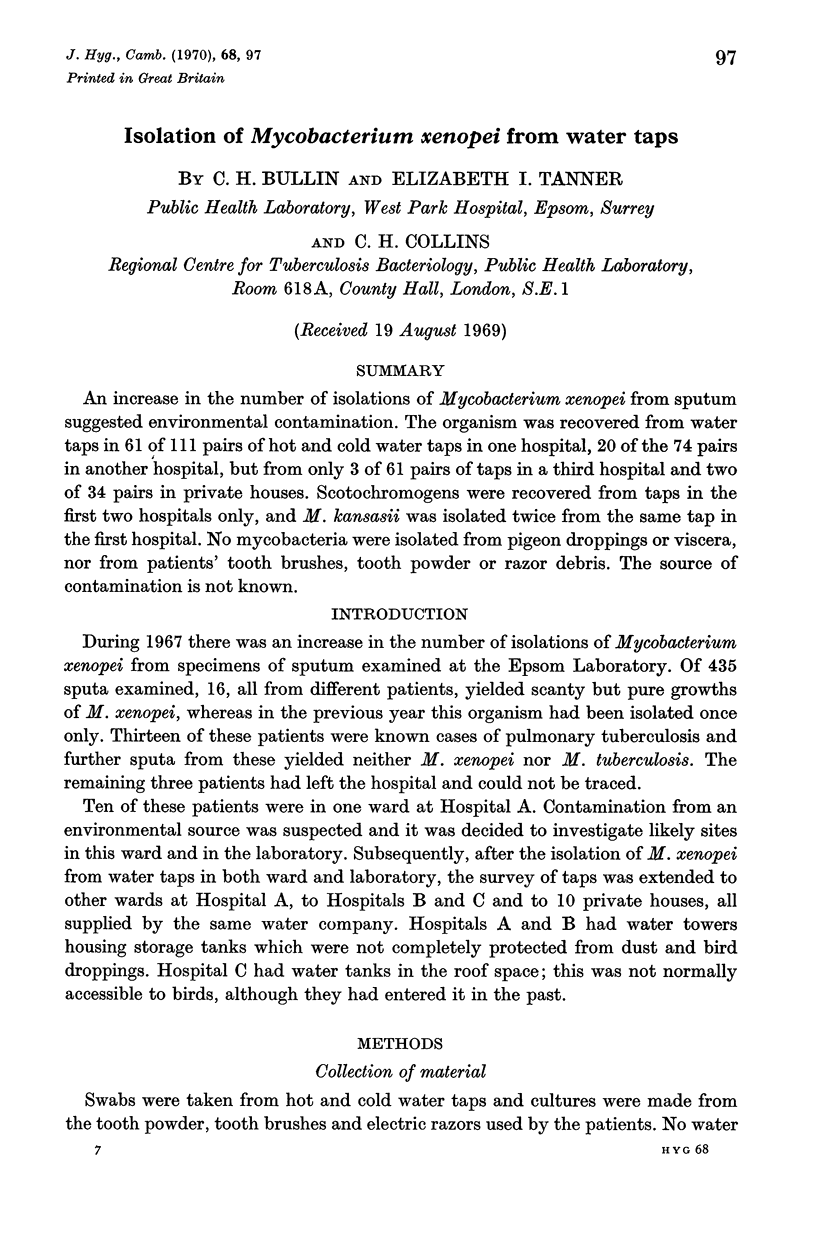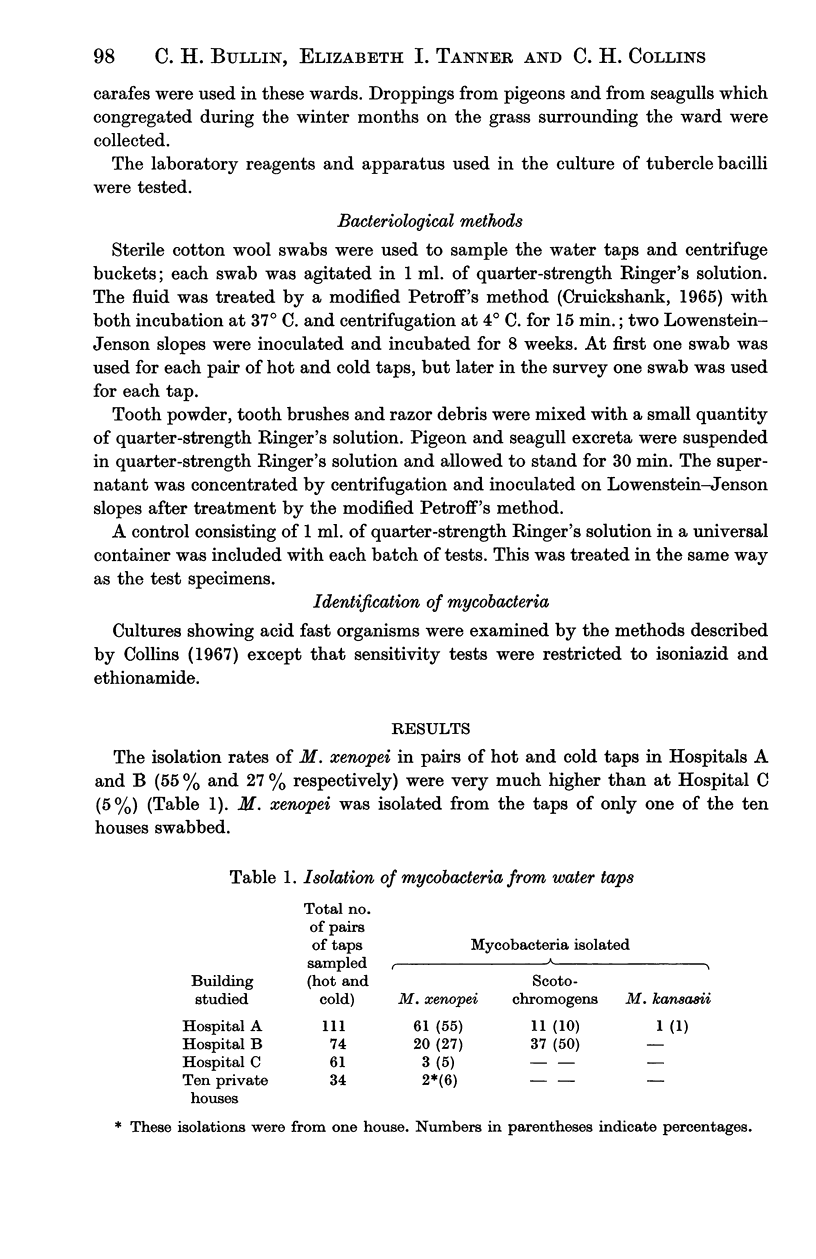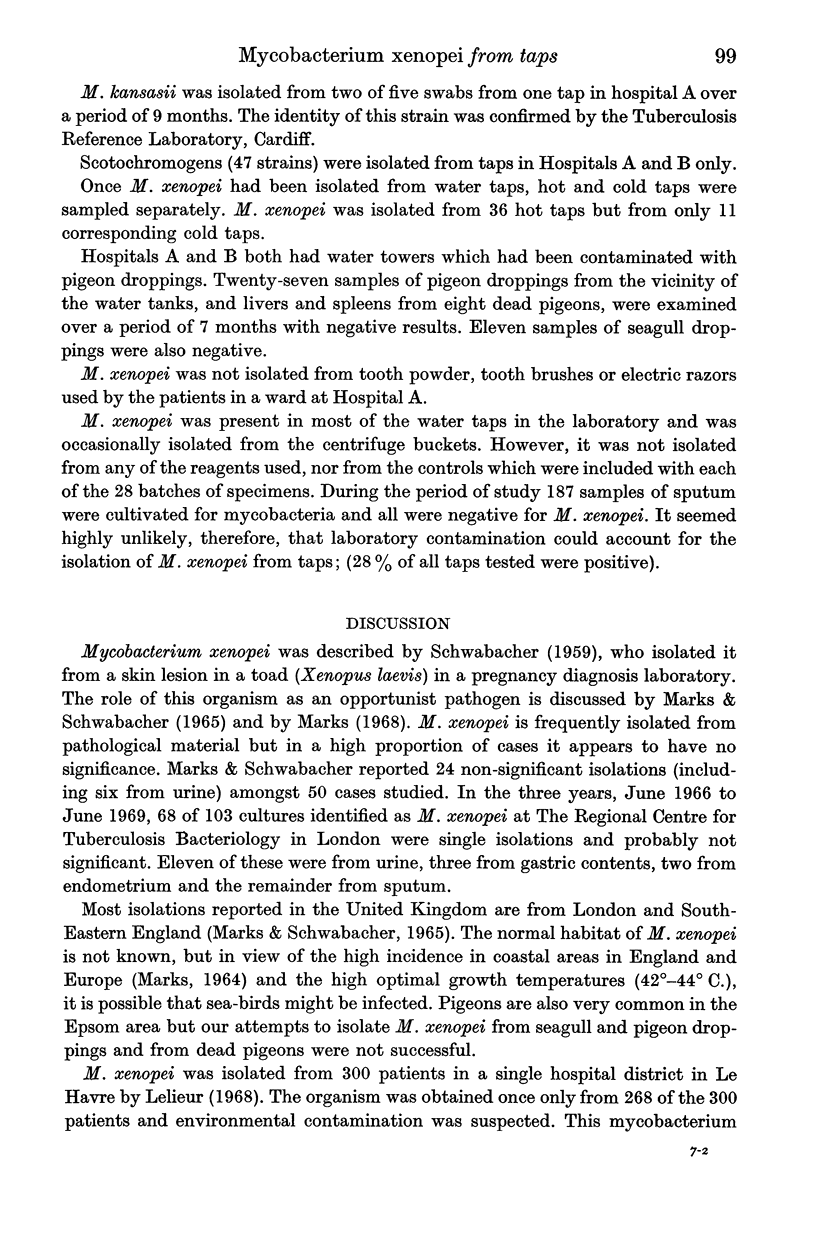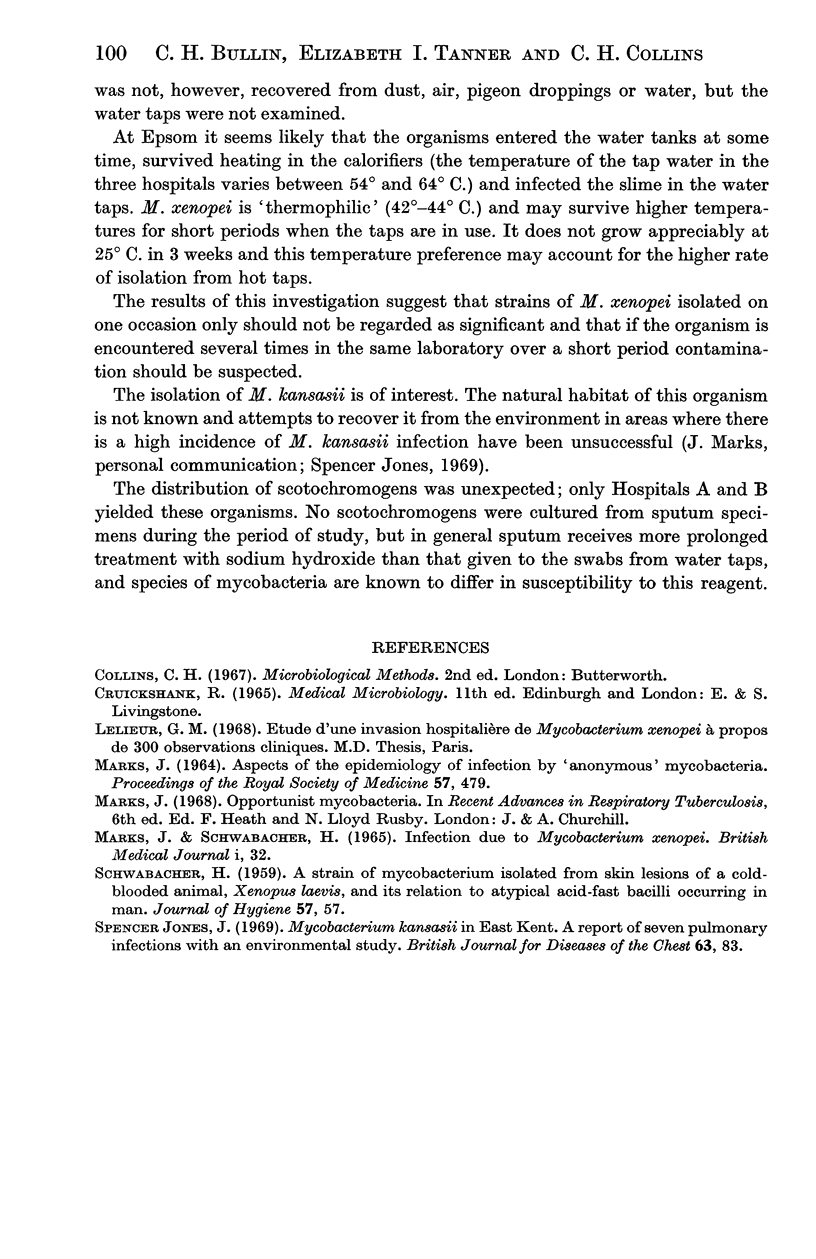Abstract
An increase in the number of isolations of Mycobacterium xenopei from sputum suggested environmental contamination. The organism was recovered from water taps in 61 of 111 pairs of hot and cold water taps in one hospital, 20 of the 74 pairs in another hospital, but from only 3 of 61 pairs of taps in a third hospital and two of 34 pairs in private houses. Scotochromogens were recovered from taps in the first two hospitals only, and M. kansasii was isolated twice from the same tap in the first hospital. No mycobacteria were isolated from pigeon droppings or viscera, nor from patients' tooth brushes, tooth powder or razor debris. The source of contamination is not known.
Full text
PDF



Selected References
These references are in PubMed. This may not be the complete list of references from this article.
- MARKS J. MYCOBACTERIAL DISEASE IN MAN AND ANIMALS. ASPECTS OF THE EPIDEMIOLOGY OF INFECTION BY 'ANONYMOUS' MYCOBACTERIA. Proc R Soc Med. 1964 Jun;57:479–480. [PMC free article] [PubMed] [Google Scholar]
- MARKS J., SCHWABACHER H. INFECTION DUE TO MYCOBACTERIUM XENOPEI. Br Med J. 1965 Jan 2;1(5426):32–33. doi: 10.1136/bmj.1.5426.32. [DOI] [PMC free article] [PubMed] [Google Scholar]
- SCHWABACHER H. A strain of Mycobacterium isolated from skin lesions of a cold-blooded animal, Xenopus laevis, and its relation to atypical acid-fast bacilli occurring in man. J Hyg (Lond) 1959 Mar;57(1):57–67. doi: 10.1017/s0022172400019896. [DOI] [PMC free article] [PubMed] [Google Scholar]


